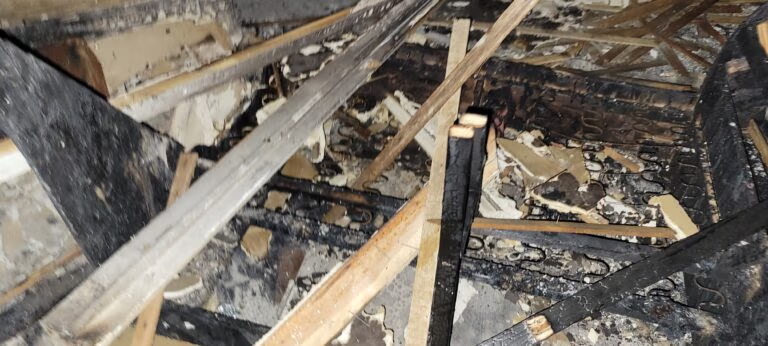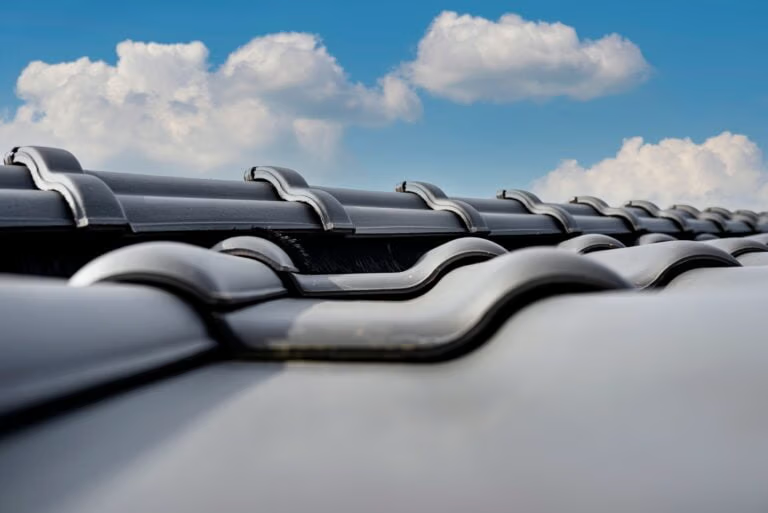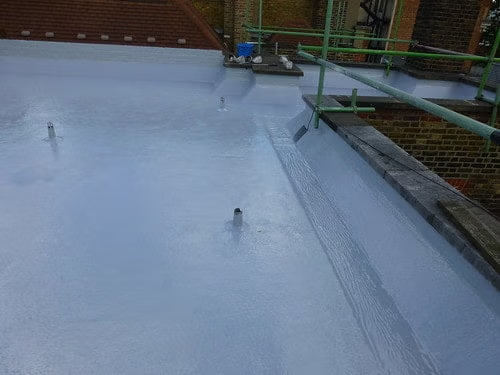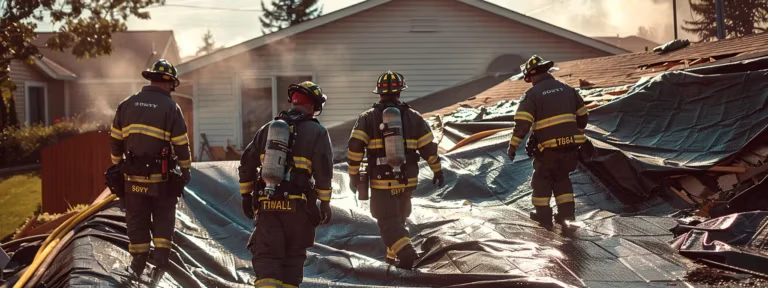Are you tired of worrying about hailstorms wreaking havoc on your roof? Imagine coming home after a storm only to find your roof in disarray, all because of those pesky hailstones. Well, fret not, as there’s a simple yet critical solution right above your head: proper gutter maintenance.
Gutters play a vital role in safeguarding your roof against the damaging effects of hail. Neglecting gutter maintenance can lead to water buildup, clogs, and ultimately, roof damage. In this blog, we delve into the importance of maintaining your gutters to prevent hail damage and costly repairs.
Let’s explore how regular gutter maintenance acts as a protective shield for your roof, reducing the risk of hail damage and ensuring your home stays safe and sound. From valuable tips to proactive measures, we’ll guide you through the best practices for keeping your gutters in top shape. Say goodbye to hail-related roof woes with our expert insights!
Introduction to Hail Damage and Gutter Maintenance
Hailstorms can wreak havoc on roofs, causing significant damage that often leads to costly repairs. Protecting your roof from hail damage is essential to maintain the integrity and longevity of your home. One crucial aspect of roof maintenance that plays a vital role inpreventing hail damage is gutter maintenance.
Gutters act as a valuable tool in diverting water away from your roof. By efficiently channeling rainwater and melted snow, gutters prevent water from pooling on your roof’s surface, reducing the risk of leaks and water damage. However, when gutters become clogged with debris or damaged, they can’t perform their intended function effectively.
Regular gutter maintenance is paramount in ensuring their optimal performance. By cleaning, inspecting, and repairing gutters on a routine basis, you can prevent clogs and ensure proper water drainage. This maintenance not only protects against water damage but also helps safeguard your roof from the damaging effects of hailstorms.
In the sections that follow, we will delve deeper into the specifics of hail damage, the importance of gutter maintenance, common types of gutter damage caused by hail, and best practices for maintaining gutters to prevent hail damage. Let’s explore how you can protect your roof from hail damage by prioritizing proper gutter maintenance.
Understanding Hail Damage and Its Impact on Roofs
Hail damage is a common concern for homeowners, and its impact on roofs should not be underestimated. When hailstones fall from the sky during a severe storm, they can vary in size from pea-sized to larger than a golf ball. These solid balls of ice can cause significantdamage to the roofing materials and structures they come into contact with.
What is Hail Damage?
Hail damage refers to the harmful effects that hailstones can have on roofs. It typically manifests as dents, cracks, punctures, or granule loss on the surface of the roof. These damages can compromise the integrity of the roof, leading to leaks, water intrusion, and potential structural issues if left unaddressed.
Impact on Roofs
Hailstones can exert immense force upon impact, leaving behind visible signs of damage. Asphalt shingles, a common roofing material, are particularly vulnerable to hail because they can crack, split, or loosen when struck by hailstones. The protective granules on the surface of the shingles may become dislodged, exposing the inner layers to further damage from UV rays and moisture.
Besides asphalt shingles, other roofing materials such as metal, wood, and tile can also suffer from hail damage. Metal roofs may dent or develop leaks, while wooden roofs can splinter or crack. Even tile roofs, known for their durability, can experience fractures or breakage as a result of hail impact.
Potential Risks
The risks associated with hail damage to roofs go beyond aesthetics. If the structural integrity of the roof is compromised, water can seep into the underlying layers and the home itself. This can lead to water leaks, rotting wood, mold growth, and a decrease in overall energy efficiency.
Furthermore, the initial hail damage can worsen over time. Small cracks or punctures may allow water to infiltrate the roof, leading to larger and more costly issues down the line. Promptly addressing hail damage through necessary repairs can help prevent more extensive damage and avoid expensive roof replacements.
To protect your roof from the damaging effects of hail, it is vital to understand the significance of regular gutter maintenance. By maintaining properly functioning gutters, you can effectively divert water away from the roof, reducing the risk of hail damage and its subsequent consequences. Hail damage can cause significant harm to roofs, jeopardizing the overall integrity of a home.
Understanding what hail damage is and how it affects roofs is crucial in taking proactive measures to prevent and address the damage. By recognizing the potential risks and promptly addressing any signs of hail damage, homeowners can protect their roofs and avoid costly repairs or replacements in the future.
*Word count: 327*
Importance of Gutter Maintenance in Roof Protection
Regular gutter maintenance plays a crucial role in protecting your roof from hail damage. By understanding the significance of keeping your gutters in top condition, you can divert water away from your roof and prevent costly repairs. Here are some key points to consider:
Diverting Water Away from the Roof
Properly functioning gutters ensure that rainwater is effectively diverted away from your roof. When hailstorms occur, gutters play a vital role in channeling the large volumes of water created by the melting hailstones. This helps prevent excessive water accumulation on your roof, reducing the risk of leaks and structural damage.
Preventing Water Damage
Clogged or damaged gutters can result in water overflowing from the roof edge, leading to water damage to the fascia, soffit, and even the foundation of your home. By regularly maintaining your gutters, you can ensure that water flows freely through the downspouts, preventing water from seeping into vulnerable areas and causing extensive damage.
Preserving Structural Integrity
Hail, combined with heavy rain and wind, can pose a significant threat to the integrity of your roof. Gutters that are clogged or in disrepair can exacerbate the impact of hail by allowing water to accumulate, potentially causing deterioration of shingles and compromising the overall structure. Regular maintenance of gutters can help minimize this risk by ensuring proper drainage and preventing unnecessary wear and tear.
Extending Roof Lifespan
By proactively maintaining your gutters, you can protect your roof from hail damage and extend its lifespan. By preventing leaks, water damage, and structural deterioration, you can avoid costly repairs and premature replacement of your roof.
In conclusion, regular gutter maintenance is essential in safeguarding your roof from hail damage. By diverting water away from the roof, preventing water damage, preserving structural integrity, and extending the lifespan of your roof, you can minimize the risk of costly repairs and ensure long-term protection for your home.
Common Types of Gutter Damage Caused by Hail
When a hailstorm hits, it can wreak havoc on your home, particularly the roof and gutters. While most people understand the potential damage that hail can cause to their roof, they often overlook the impact it can have on their gutters. It is important to recognize the types of gutter damage that can occur due to hail and to address them promptly to avoid further complications.
1. Dents and Dings: Hailstones can dent and ding gutters, especially those made of aluminum or other soft materials. These dents not only compromise the aesthetic appearance of your gutter system but can also affect its functionality. Dented gutters may not be able to effectively divert water away from your roof, leading to potential water damage.
2. Cracks and Fractures: Hailstones can also create cracks and fractures in the gutters. These small openings may not be immediately noticeable but can worsen over time, leading to leaks and water infiltration. If left unaddressed, this can result in structural damage to your home’s foundation or walls.
3. Loose or Detached Gutters: The force of hail can loosen the gutter attachments and even cause them to detach from the roofline. Loose or detached gutters are ineffective in redirecting rainwater away from your home, leading to water pooling and potential water damage.
4. Bent or Misaligned Gutters: Hail can bend or distort gutters, affecting their alignment and functionality. Bent gutters can impede proper water flow, causing water to overflow and potentially damage your roof, siding, or landscaping.
5. Clogged Downspouts: Hail can dislodge debris or cause a buildup of hailstones within the gutter system. This can lead to clogged downspouts, resulting in the improper drainage of water. Clogged downspouts can cause water to back up and overflow, potentially damaging the foundation of your home.
It is essential to address these types of gutter damage promptly. Failure to repair or replace damaged gutters can lead to more severe consequences, including water damage to your home’s interior, foundation issues, and even mold growth.
By regularly inspecting your gutters after a hailstorm and seeking professional assistance if needed, you can ensure that your gutter system remains in optimal condition, protecting your home from the damaging effects of hailstorms. Remember, prevention is key, and addressing gutter damage promptly can save you from costly repairs in the long run.
Best Practices for Gutter Maintenance to Prevent Hail Damage
Regular gutter maintenance is key to protecting your roof from hail damage. By following these best practices, you can minimize the risk of costly repairs and ensure the longevity of your gutters.
Clean Your Gutters Regularly
One of the most important aspects of gutter maintenance is keeping them clean and free from debris. Clogged gutters can lead to water overflow, causing damage to your roof and increasing the likelihood of hail damage. Make it a habit to clean your gutters at least twice a year, especially in the spring and fall when leaves and other debris tend to accumulate.
Inspect for Damage and Leaks
Regular inspections are essential to identify any signs of damage or leaks in your gutters. Look out for cracks, holes, or sagging sections that could compromise their effectiveness in diverting water away from your roof. Additionally, check for loose or missing gutter brackets and ensure that the gutter is securely attached to your home.
Repair and Replace Damaged Sections
If you notice any damage during your inspection, it’s crucial to address it promptly. Repair or replace any cracked or damaged sections of your gutters to maintain their functionality. Sealing leaks with gutter sealant can prevent water from seeping into your roof and causing further damage.
Maintain Proper Slope and Alignment
Proper gutter slope and alignment are essential to ensure water flows smoothly and doesn’t collect in certain areas. Make sure your gutters are sloped towards the downspouts to facilitate efficient water drainage. Additionally, check that the gutters are properly aligned with the fascia board, as misalignment can lead to water overflow and potential damage.
Install Gutter Guards
Consider installing gutter guards to minimize the amount of debris that enters your gutters. These protective covers prevent leaves, twigs, and other debris from clogging the gutters, reducing the need for frequent cleaning and improving their overall performance.
Keep Downspouts Clear
In addition to cleaning your gutters, it’s important to keep your downspouts clear as well. Ensure that downspouts are securely connected to the gutters and extend them away from your foundation to avoid water pooling near your home. Regularly check for any blockages in the downspouts and clear them to maintain proper water flow.
Seek Professional Assistance
If you’re unsure about maintaining or repairing your gutters, it’s always best to seek professional assistance. Gutter maintenance experts can thoroughly inspect and clean your gutters, identify any underlying issues, and provide the necessary repairs or replacements. They have the expertise and tools to ensure your gutters are in optimal condition to withstand hail and protect your roof.
Remember, proper gutter maintenance is not only crucial for preventing hail damage but also for the overall health and longevity of your roof. By following these best practices, you can safeguard your home from costly repairs and enjoy a durable and reliable roofing system.
The Role of Protective Coatings and Upgrades in Gutter Maintenance
Protective coatings and upgrades play a crucial role in maintaining gutters and enhancing their resistance to hail damage. By investing in these preventive measures, you can ensure that your gutters are prepared to withstand the impact of hailstorms and minimize the chances of costly roof repairs. Here are some important considerations when it comes to protective coatings and upgrades for gutter maintenance:
1. Protective Coatings: Shielding Gutters from Hail Damage
One effective way to fortify your gutters against hail damage is by applying protective coatings. These coatings add an extra layer of durability to the gutters, making them more resistant to the impact of hailstones. Water-resistant paint or coatings specifically designed for gutter protection can create a barrier that shields the gutters from potential damage. It’s recommended to choose coatings that are weather-resistant and specifically formulated for the materials of your gutters. Consulting with a professional can provide valuable insights on the best coating options for your specific needs.
2. Upgrading to Impact-Resistant Gutters
Another worthwhile consideration is upgrading to impact-resistant gutters. These specialized gutters are designed to withstand the force of hailstones, making them an excellent defense against hail damage. Impact-resistant gutters are typically made from heavy-duty materials such as steel or aluminum, providing added durability and strength. Investing in these upgraded gutters can offer long-term protection and reduce the likelihood of damage during hailstorms. You can consult with gutter replacement professionals who can guide you through the various options available and provide valuable recommendations based on your specific requirements.
3. Reinforcing Gutters with Additional Support
In areas prone to severe hailstorms, reinforcing gutters with additional support can be a wise proactive measure. This can be achieved by installing gutter brackets or hangers at closer intervals, providing extra stability to the system. Reinforcing the gutters helps prevent them from sagging or pulling away from the roof under the weight of accumulated hail and rainwater. By reinforcing the gutters, you can ensure their stability and effectiveness in diverting water away from your roof, reducing the risk of water damage and hail-induced structural issues.
4. Regular Inspections and Maintenance
Alongside protective coatings and upgrades, regular inspections and maintenance remain essential in keeping your gutters in optimal condition. Regularly inspecting the gutters for signs of damage, such as cracks, holes, or loose joints, allows for prompt repairs before hailstorms occur. Additionally, keeping the gutters clean and clear of debris ensures their proper functioning and reduces the chances of clogging, which can lead to water overflow and potential damage. By combining protective coatings, upgrades, and routine maintenance, you can maximize the longevity and effectiveness of your gutter system in preventing hail damage.
In conclusion, protective coatings, upgrades, and appropriate maintenance are key factors in enhancing the resistance of gutters to hail damage. By implementing these measures, you can safeguard your gutters, minimize the risk of roof damage, and avoid costly repairs. Consult with professionals in the field for expert advice and suitable protective solutions tailored to your specific gutter system. Remember, investing in preventative maintenance now can save you from future headaches and costly repairs caused by hailstorms.
Hail Damage Insurance Coverage and Claims Process
Having adequate insurance coverage for hail damage is essential to protect your roof and prevent expensive repairs. Understanding the insurance claims process is crucial in case your roof suffers hail damage. Here, we provide insights into the significance of insurance coverage and guide you through the claims process, including working with insurance adjusters.
The Importance of Insurance Coverage
Obtaining comprehensive insurance coverage for hail damage is a wise investment. Hailstorms can cause significant damage to your roof, leading to leaks, structural issues, and compromised integrity. Without insurance coverage, the cost of repairs or replacement falls solely on you, potentially resulting in financial strain.
Types of Insurance Coverage
When it comes to protecting your roof from hail damage, there are two main types of coverage: homeowner’s insurance and roof-specific insurance policies. Homeowner’s insurance typically covers hail damage as part of its comprehensive coverage for property damage. However, it’s important to review your policy to ensure hail damage is included.
Roof-specific insurance policies, such as hail damage insurance or supplemental roof insurance, provide specialized coverage specifically for roof-related hail damage. These policies often offer more comprehensive coverage and may include additional benefits like emergency repairs or temporary shelter.
The Claims Process
In the event that your roof sustains hail damage, it’s crucial to promptly initiate the insurance claims process. Follow these steps to efficiently navigate the process:
1. Document the damage: Take detailed photos and videos of the hail damage to your roof. Capture the extent of the damage from different angles, including close-ups of any specific areas affected.
2. Contact your insurance company: Notify your insurance company as soon as possible about the hail damage. Provide them with accurate and detailed information regarding the damage sustained.
3. Working with an insurance adjuster: After filing a claim, the insurance company will assign an insurance adjuster to assess the damage. The adjuster will schedule a visit to inspect your roof and determine the scope of the damage. Ensure you are present during the inspection to provide any necessary information and discuss the damage.
4. Obtain repair estimates: As part of the claims process, your insurance company may require estimates from roofing contractors or specialists. Obtain multiple repair estimates to compare and provide them to your insurance adjuster.
5. Claim settlement: Once the insurance adjuster has evaluated the damage and reviewed the estimates, the insurance company will provide a claim settlement offer. Review the offer carefully and, if necessary, negotiate with the adjuster to ensure a fair settlement that covers the full extent of the damage.
6. Roof repair or replacement: Upon reaching a settlement, you can proceed with the necessary roof repairs or replacement. Ensure you hire reputable and professional roofing contractors to carry out the work.
Protecting Your Roof with Insurance Coverage
Having adequate insurance coverage for hail damage is a crucial aspect of safeguarding your roof against the costly impact of hailstorms. By understanding the insurance claims process and working closely with insurance adjusters, you can effectively navigate the process and ensure that your roof receives the necessary repairs or replacement. Don’t delay in securing the right insurance coverage to protect your roof from hail damage and mitigate potential financial burdens.
Case Studies and Success Stories of Hail Damage Prevention
Gutter maintenance plays a crucial role in preventing hail damage to roofs, and there have been several real-life success stories that highlight the effectiveness of proactive measures. These case studies serve as valuable examples of how proper gutter maintenance can save homeowners and businesses from costly roof repairs. Let’s explore some of these inspiring stories:
Case Study 1: John’s Resilient Roof
John, a homeowner in a hail-prone area, decided to invest in regular gutter maintenance to protect his roof. By cleaning and inspecting his gutters annually, he ensured the proper drainage of rainwater and effectively diverted any hail that came his way. The proactive measure paid off when a severe hailstorm struck the neighborhood. While his neighbors’ roofs suffered significant damage, John’s well-maintained gutters successfully redirected the hail, sparing his roof from any major destruction. John’s success story underscores the importance of consistent gutter maintenance in mitigating hail damage.
Case Study 2: ABC Company’s Commercial Roof
ABC Company, an enterprise with a large commercial property, faced the challenge of protecting its extensive roof from hail damage. Recognizing the significant potential impact of hailstones, the company implemented a comprehensive gutter maintenance plan. This involved regular cleaning, inspection, and repairs as needed. By reinforcing their gutter system with heavy-duty materials and investing in protective coatings, they enhanced their roof’s resilience against hail. When a severe hailstorm struck, the well-maintained gutters efficiently channeled the hail away from the roof, ensuring minimal damage and avoiding disruption to their operations.
Case Study 3: Sarah’s Insurance Coverage
Sarah, a homeowner who recently experienced hail damage, also offers an inspiring story. She had obtained comprehensive hail damage insurance coverage, which included coverage for gutter-related damage. After a particularly damaging hailstorm, Sarah filed an insurance claim and worked closely with an insurance adjuster. To her delight, her claim was processed smoothly and she received swift compensation for the repair costs. Sarah’s success story emphasizes the importance of having adequate insurance coverage for hail damage, including coverage for gutter-related repairs.
These case studies demonstrate the effectiveness of gutter maintenance and proactive measures in preventing hail damage. Whether it’s regular cleaning and inspection, reinforcing gutters with protective coatings, or having appropriate insurance coverage, taking these actions can significantly reduce the risk and impact of hail damage to roofs.
By learning from these successes and implementing similar practices, homeowners and businesses can safeguard their roofs from hail damage, potentially saving themselves from costly repairs and disruptions. Remember, proper gutter maintenance is a valuable tool in protecting one of the most important components of your home or building: the roof.
To further reinforce the significance of gutter maintenance, let’s explore common types of gutter damage caused by hail and the best practices for maintaining gutters to prevent hail damage.
Conclusion and Next Steps
In conclusion, maintaining your gutters is a crucial aspect of roof maintenance that plays a significant role in preventing hail damage. By following the tips and insights provided in this article, you can take proactive measures to safeguard your roof and avoid costly repairs. Here are the key points to remember and the actionable steps you can take:
1. Regular Gutter Maintenance: Make sure to clean your gutters at least twice a year to remove debris and prevent clogs. This will ensure proper water flow and prevent water from overflowing onto your roof.
2.Inspect for Damage: Conduct regular inspections to identify any gutter damage caused by hail. Look for cracks, dents, or loose connections. Promptly repair or replace any damaged sections.
3. Install Protective Measures: Consider adding gutter guards or screens to prevent debris buildup and enhance gutter performance. Additionally, installing splash blocks or extenders can help divert water away from your home’s foundation.
4.Consider Protective Coatings: Apply water-resistant paint or protective coatings to your gutters to enhance their durability and resistance to hail damage.
5. Maintain Proper Drainage: Ensure that downspouts are directed away from the foundation of your home. This will prevent water accumulation and potential water damage.
By following these steps and staying proactive in your gutter maintenance, you can significantly reduce the risk of hail damage to your roof. Remember to consult with professionals if needed, and consider reviewing your insurance coverage to ensure you’re adequately protected. Protect your investment and enjoy peace of mind knowing that your roof is well-maintained and shielded from the damaging effects of hailstorms.






